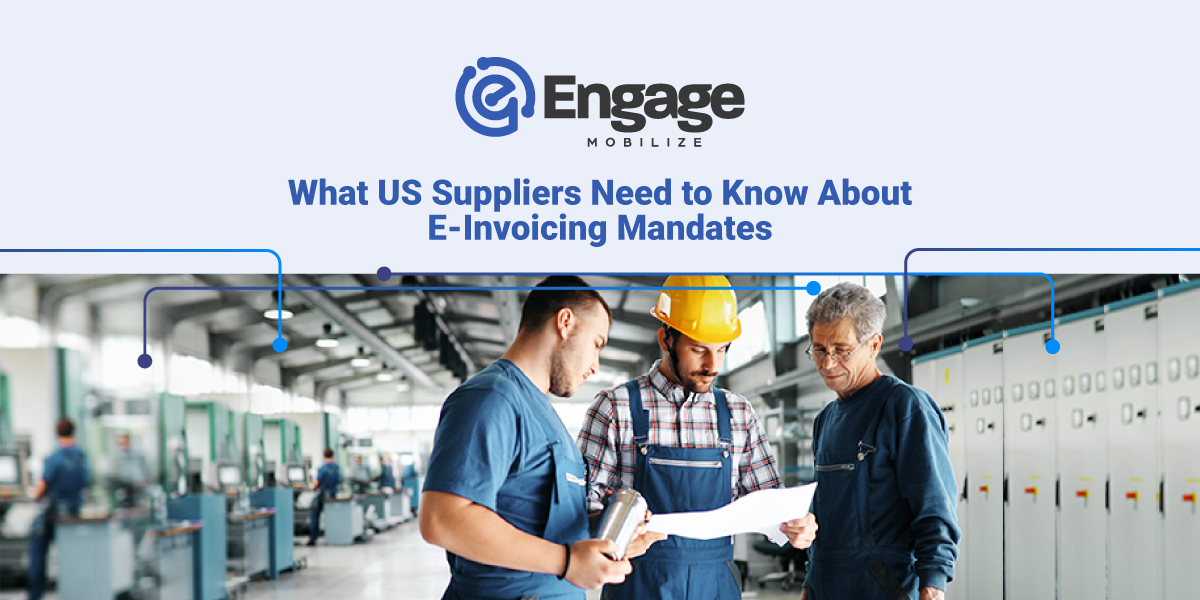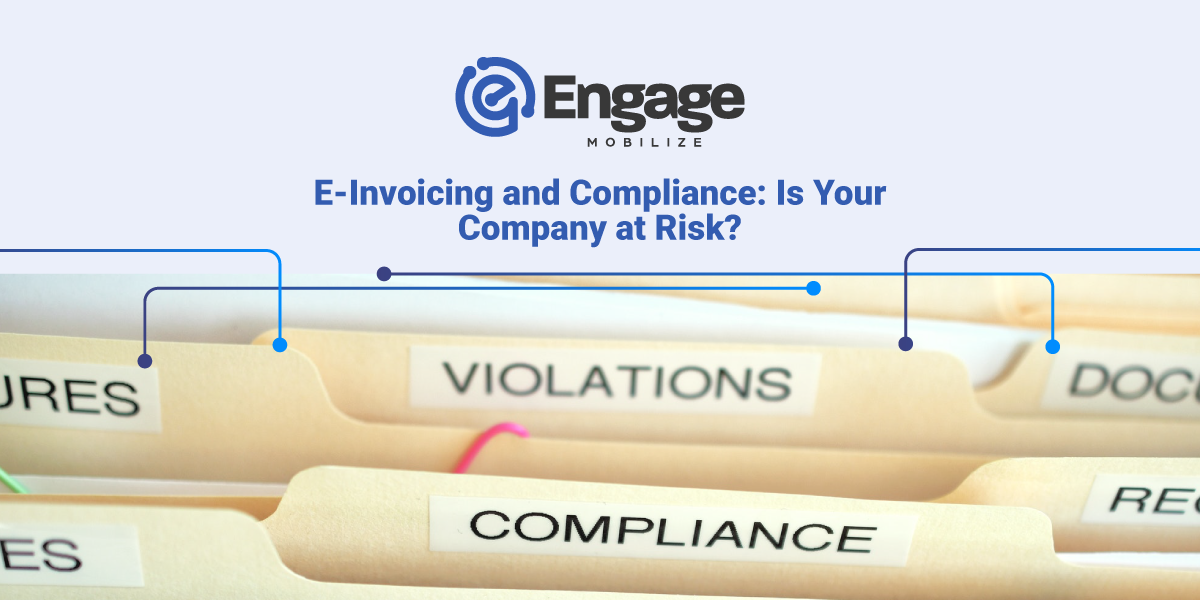What US Suppliers Need to Know About E-Invoicing Mandates

If your oil, energy, or renewables customer base extends overseas or is connected in any way with government contracts, various mandates, taxes, and regulatory requirements are already part of your business landscape. Even if your entire customer base is in the B2B or B2C sphere rather than B2G, E-Invoicing mandates may be coming your way soon. Finland is one country that now requires these invoices for government contracts, public companies, and private B2B enterprises.
This makes it more important than ever for industrial enterprises like yours to understand new and pending digital invoicing mandates and how they’ll affect your business. Lack of compliance could leave you subject to fines, penalties, and possible business disruption.
What is an Invoicing Mandate?
It’s basically a contract requiring all companies doing business with the mandating entity to conform to certain standards, platforms, and formats for billing, payments, and tax reporting. As of now, these mandates only affect US companies with government contracts and those who conduct business with countries or enterprises mandating electronic invoicing.
An E-Invoice is a digital system for generating, tracking, paying, and archiving financial transactions. This includes the invoices themselves as well as credit notes, purchase orders, and supporting documentation like payment terms. It takes the paperwork and resulting inaccuracies out of the equation while adding a new level of accountability, transparency, and efficiency.
Electronic invoicing is mandated throughout the European Union and in nine other countries. Although each country has its own platforms, requirements, and systems in place, there are global requirements that apply to all suppliers, regardless of industry. You can view which companies currently have invoicing mandates here, but the listing can be updated or changed as market conditions and requirements change. I’d recommend checking back often while planning your digital transformation and after.
There are also mandates looming on the horizon from various parts of the globe. If your company does business with any of these countries or has expansion plans in the near future, pay attention.
- France: France’s invoicing mandate is scheduled to enter Phase One of its rollouts by January 1, 2023. This mandate requires all invoices to be submitted via the Chorus Pro platform.
- Greece: The invoicing mandates for Greece will happen in four phases, the first of which was began in November, 2021 and covers all business relationships. This mandate relates to requirements for businesses to submit invoices via the MyData platform if they:
- Use single-entry accounting methods and have a turnover above € 100,000
- Use double-entry accounting methods with a turnover higher than € 50,000 euro
- Italy: This country has two mandates set to take effect this year. By July 2022, buyers and suppliers must report all invoices generated between Italian and non-Italian suppliers to the Sistema di Interscambio (Sdl) invoice exchange platform. The deadline for changing the format for reporting platforms from Estermetro to FatturaPA XML for all SdI reporting of cross-border transactions.
- Mexico The Mexican mandate requires suppliers to include a Carte a Porte transportation note with all tax invoices effective January 1, 2022.
- Saudi Arabia: Beginning on January 1, 2023, suppliers will need a digital signature and clearance from the government to issue invoices. These invoices must be submitted via the ZACTA platform, where they’ll need to receive a QR code and Universal ID number before they can be cleared for processing.
What are the Electronic Invoicing Requirements for US Companies?
Although there has been a push to adopt national e-Invoicing mandates in the United States, the process has been slow to develop and roll out on a mandatory basis. As of this writing, US B2G suppliers are required to use its s Invoice Processing Platform when fulfilling government contracts.
In order to meet compliance, electronic invoices are typically required in one of two formats before they’re approved and honored or filed:
- Structured invoice format: This system transfers electronic invoices in a machine-readable format to the client ERP through an EDI. Once submitted, it’s stored electronically until approval or filing.
- Hybrid invoice format: This is the most common format on a global level, but that could change. With a hybrid format, invoices are simultaneously generated in a human-readable format like PDF-A/3 and a structured format like those described above.
Other than these formats, mandatory invoicing specifics vary from country to country. Some require more information than others, such as terms or authorizations. There are also rules regarding archiving and approvals that differ by location and government entity or business model (i.e. B2B and private or public companies).
The approach can also vary by country or business. For example, some take a clearance approach similar to that of Mexico or Saudi Arabia. The clearance is granted or denied by the taxation agency of the government for approval rather than to the buyer or vendor. India’s newly mandated authentication/clearance method has already uncovered several cases of fraud and inaccurate data within the first few months of rollout.
Using a post-audit approach allows you to bypass tax authority approval, at least temporarily, and submit invoices directly to clients or vendors. However, it provides a layer of transparency that makes it easy for governments to monitor transactions and flag suspect companies for audit. The invoice must ultimately be filed with tax authorities, and copies are required to be stored for a set period of time.
Whatever the formatting requirements or approach, the submission/payment process is relatively uniform and stable.
In general, it proceeds like this:
- Supplier ERP generates an invoice according to country specifications
- Invoice is transferred to tax authority and/or buyer’s AP system, depending on the approach
- Authentication is obtained
- Invoice is either filed or rejected
- Buyer pays approved invoices
- Supplier generates tax returns for paid invoices and submits any tax payments to the proper authority as required
Why You Should Implement E-Invoicing Even Without a Mandate

Even if you aren’t dealing with an entity that mandates E-Invoicing, and have no plans to do so, implementing such a system into your core business applications offers many benefits that will make it worth your while.
1. Risk Mitigation
It’s especially useful for minimizing risk if you’re in an industry or working with entities that have high rates of fraud, corruption, and tax evasion. Even if your enterprise is on the up-and-up, such activity could blow back and negatively impact you. At the very least, it will save you a lot of headaches and anxiety.
2. Cost Controls
In terms of manpower, e-Invoicing allows core activities to be automated so that your staff can perform more productively. You’ll also save on postage, paper forms, and processing time, which means faster payments.
3. Improved Efficiency
You and you’re staff will no longer have to waste productive time on chasing payments, re-submitting forms, or any of the other dozen issues with paper invoicing. Everything is updated globally as soon as invoices and payments are generated.
4. Greater Accuracy and Transparency
When touchpoints are reduced or eliminated and transactions have high visibility, you’re eliminating opportunities for fraud. This will also reduce the risk of audits and ensure timely, accurate financial transactions and reporting.
5. Timely Reporting and Analysis
Speaking of reporting, digitizing your invoicing system allows financial data to be recorded and stored in real-time. This helps with everything from data-driven decision-making to long-term planning and budgeting.
6. Universal Acceptance
When most of your buyers and vendors are already using an electronic invoicing platform, you won’t have to worry about platform compatibility, long waits for approval and payments, or keeping up with the competition. Undergoing a digital migration now will prevent having to speed the process if and when it becomes necessary in the future. You can take the time to do the rollout right when there’s no pressure to meet a compliance deadline.
Final Thoughts
Whatever your industry or client base, adopting an electronic invoicing system offers benefits that go beyond the very favorable ROI. The right platform will integrate with existing ERPs and accounting systems while ensuring full transparency and compliance with whatever mandates come your way.
Your company’s industrial software solutions are available now from Engage Mobilize. Get in touch with a team member to schedule a consultation about your automation needs today. We offer cutting-edge solutions that will transform the way you do business without adding to the complexity.
Are you ready to learn more?
We’re ready to talk to you about the specific cost savings, workflow efficiencies and data insights that come from taking your field operations digital.
Share this
Similar Stories

E-Invoicing and Compliance: Is Your Company at Risk?

Best Practices for Field Ticketing in Oil & Gas
